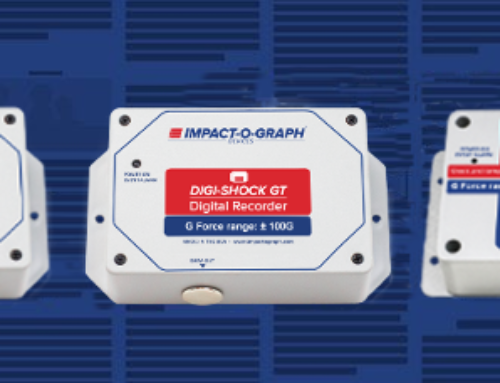Impact Indicator with Basic Data and Cost Savings Provides Solution for Electronic Manufacturer
A leading global electronic equipment manufacturer had requirements to monitor their sensitive equipment to alert for impact damage at specific G levels. Their initial investigation into monitoring devices was to use impact recorders. They needed to see a higher level of recorded impact data that standard impact indicators could not provide.
Concerns About Damage
The customer’s packaging was high quality however different known G levels of impacts could still damage various sensitive components within their product line of equipment. The electronic components included: lasers, optics, servos, electronic sensors, precision mechanical parts, control panels and processor boards. In Addition, damage to finished exterior, frame and final approved accuracy of their equipment were a concern as well during shipment.
Impact Recorder Evaluation
The manufacturer had evaluated and considered impact recorders but after analyzing their situation, it was determined that recorders were not a feasible solution for two primary reasons:
- Investment of Impact Recorders – The high volume of crates they ship from several of their global manufacturing facilities required a significant number of impact recorders. In addition, the total cost for the recorders was well beyond their budget (at entry level recorder costs).
- Operationally Inefficient – The manufacturer determined using recorders would be operationally inefficient due to the volume that required programming, specific mounting requirements, data retrieval and management. Also, the cost to retrieve the recorders for redeployment was prohibitive.
Simplified Monitoring Solution
The manufacturer evaluated the Impact-O-Graph Trans-Monitor TD (TMTD) and determined the device provided several key features that satisfied their requirements as follows:
- Basic Data – A primary reason important to the manufacturer is the device provides a critical piece of data that a basic impact indicator does not provide. The data includes ‘when’ the impact occurred. The impact time and date allows the user to quickly discover who the carrier was and likely the location of the shipment when the damage occurred. This is critical information not provided by basic indicators that enables accountability for damage to be evaluated then addressed.
- Cost Savings – When compared to impact recorders, the cost savings to the manufacturer were huge. Only one indicator was needed on each crate being shipped because the device is multi-axis (detects impacts from all directions) unlike other types of indicators. In addition, the operational cost was reduced (time & labor) to mount the devices. Plus the device is single use eliminating the need to retrieve the devices for redeployment saving on costs.
- Compact Size – The TMTD has a compact design both in diameter / height and is light in weight. Due to the small size and low profile, the manufacturer found the device could be mounted in various locations on the exterior of the crated shipments. Furthermore, the device provides easy to view visual of a trigger (with date & time) to determine if any inspection for damage was required.
- Fast to Mount – The TMTD is fast and easy to mount with the advanced industrial acrylic adhesive allowing mounting on a wide range of surfaces. Screw holes on the TMTD can also be utilized however usually not required (rarely reported used) due to the superior properties of the adhesion material. The manufacturer additionally utilized the TMTD warning labels with each device raising awareness to all shippers to handle their crates with care further reducing their shipment damage.
- Accuracy – The manufacturer had several customers report instances where the impact device was triggered (date & time stamped) indicating potential damage. The equipment with triggered TMTD’s was inspected by the manufacturer and in each instance, damage was discovered. Their customers have also reported no damage to equipment received with TMTD’s mounted to crates where the device was not triggered. All their customer feedback was positive regarding the added value steps the manufacturer had taken to reduce damage to their products during shipment. In addition, positive customer feedback was received regarding the initial date and time that was marked (dedicated area on the TMTD) on each device from when the crate actually left the manufacturers facility.
- Long Battery Life – Positive reports have been received regarding the TMTD’s extended battery life of up to 1 year. The primary value of the extended battery life was experienced with certain shipments that were delayed and some extended storage periods prior to final delivery of the equipment to their customers. All un-triggered TMTD’s were still functioning (clock timer advancing) and triggered units were accurately holding the date & time of impacts.
The electronic manufacturer found that a simple solution was the best solution for their needs. For more information about the Trans-Monitor TD contact us today. We are certain we can find the right solution for your monitoring requirements.








